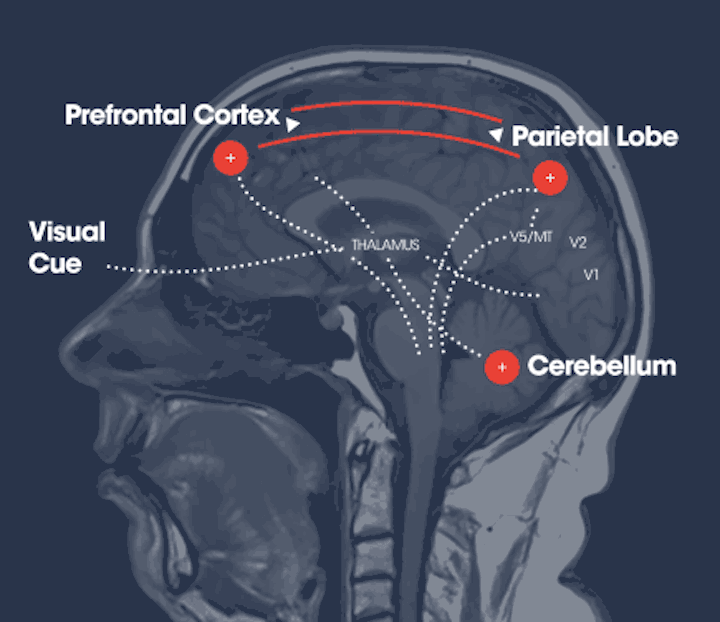Eye tracking technology, combined with VR, is proliferating, with myriad medical, gaming, and education applications.
SyncThink uses eye tracking, built into an Oculus Rift, to detect if a person has the ability to keep
the eyes synced with moving objects, to determine brain injury and track recovery.
The company has been granted 10 patents, for eye-tracking hardware, and analytical techniques for stimulating, measuring, and training brain attention networks. It has been used to detect concussions on the field and evaluate soldier readiness and brain impairment after injury. The company describes additional applications including characterizing and monitoring fatigue, performance, and developmental or neurodegenerative conditions.
Eyefluence, which was today acquired by Google, creates head-mounted display AR, VR, and mixed reality interfaces. According to the company, its AR application allows critical care professionals to access patient data with their eyes while their hands treat the injured. VR integrations humanize experiences, reduce nausea, optimize image resolution, and increase speed.
ApplySci believes that the next step in AR/VR enhancement is integrating mobile EEG into headsets, combining eye tracking, GSR, and brainwave data into various applications.
ApplySci’s 6th Wearable Tech + Digital Health + NeuroTech Silicon Valley – February 7-8 2017 @ Stanford | Featuring: Vinod Khosla – Tom Insel – Zhenan Bao – Phillip Alvelda – Nathan Intrator – John Rogers – Mary Lou Jepsen – Vivek Wadhwa – Miguel Nicolelis – Roozbeh Ghaffari –Tarun Wadhwa – Eythor Bender – Unity Stoakes – Mounir Zok – Krishna Shenoy – Karl Deisseroth
